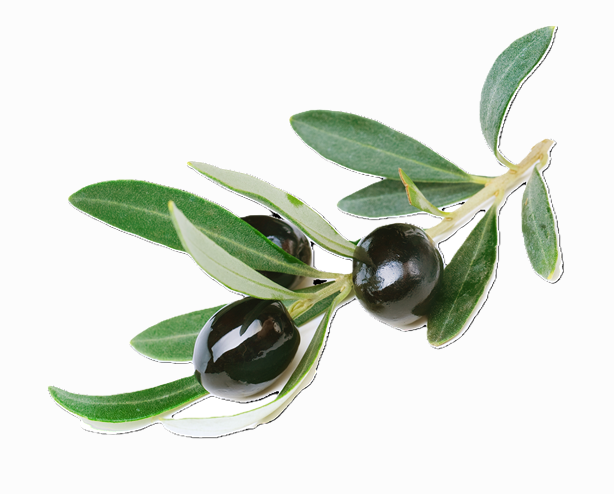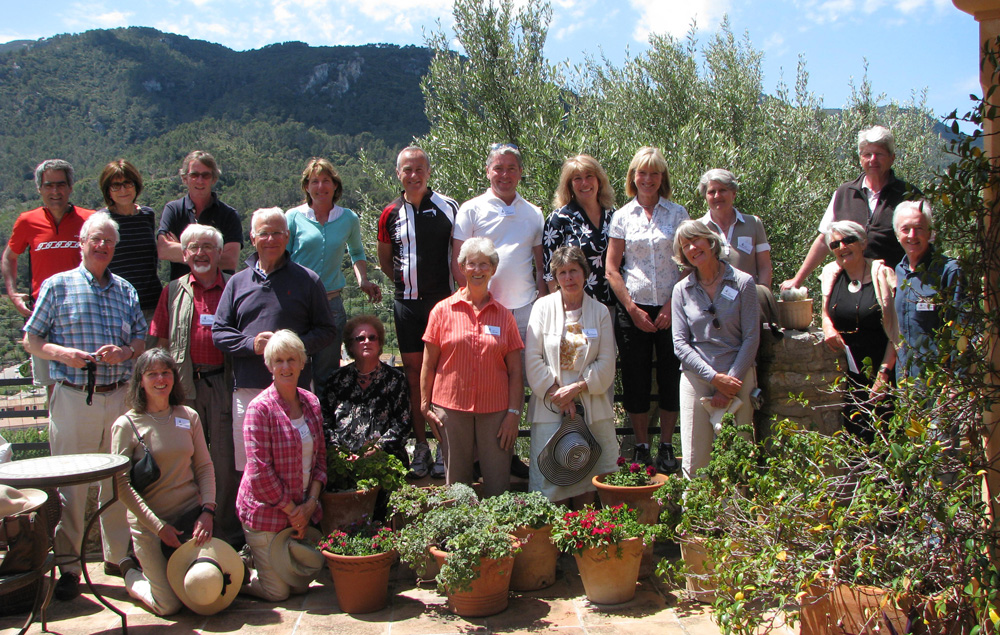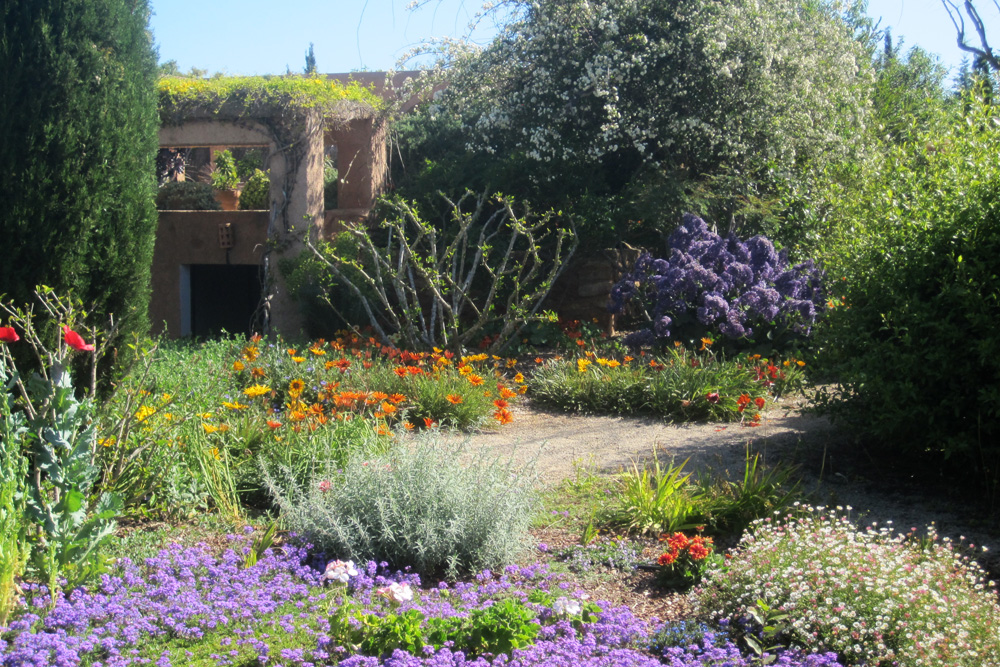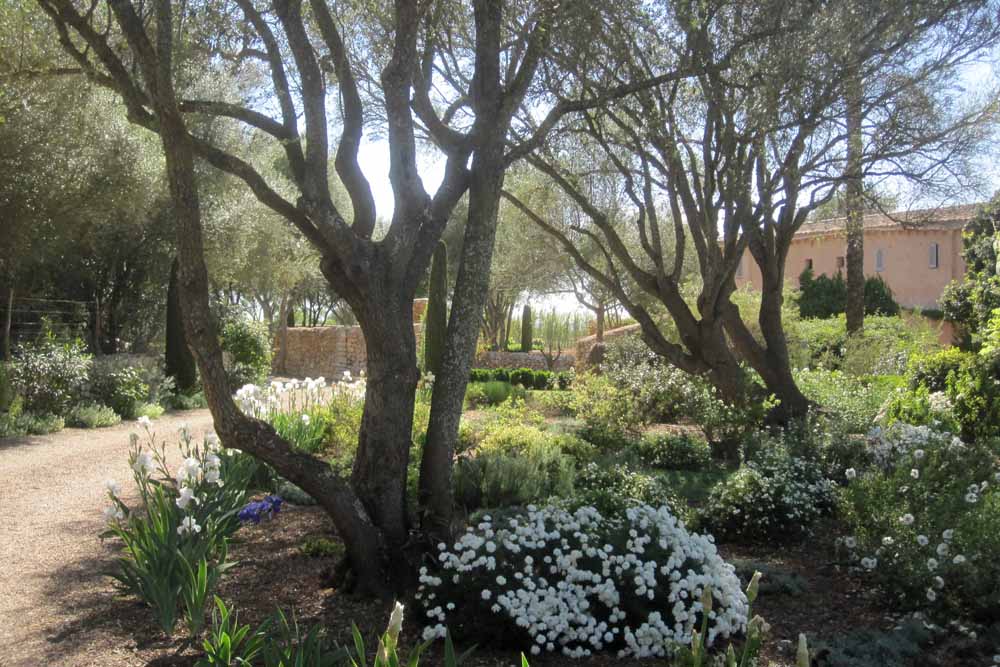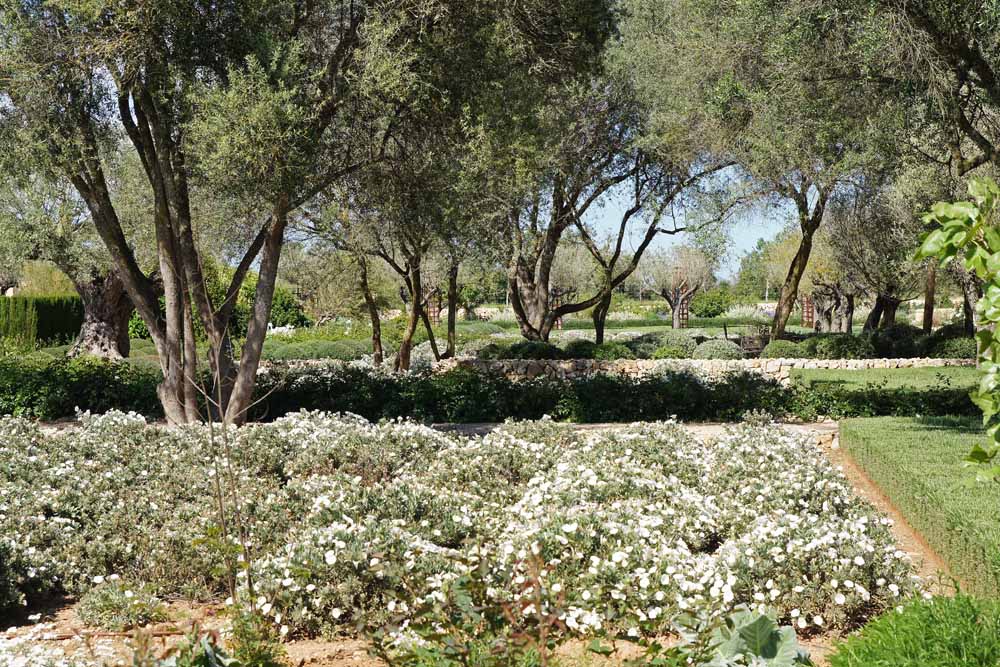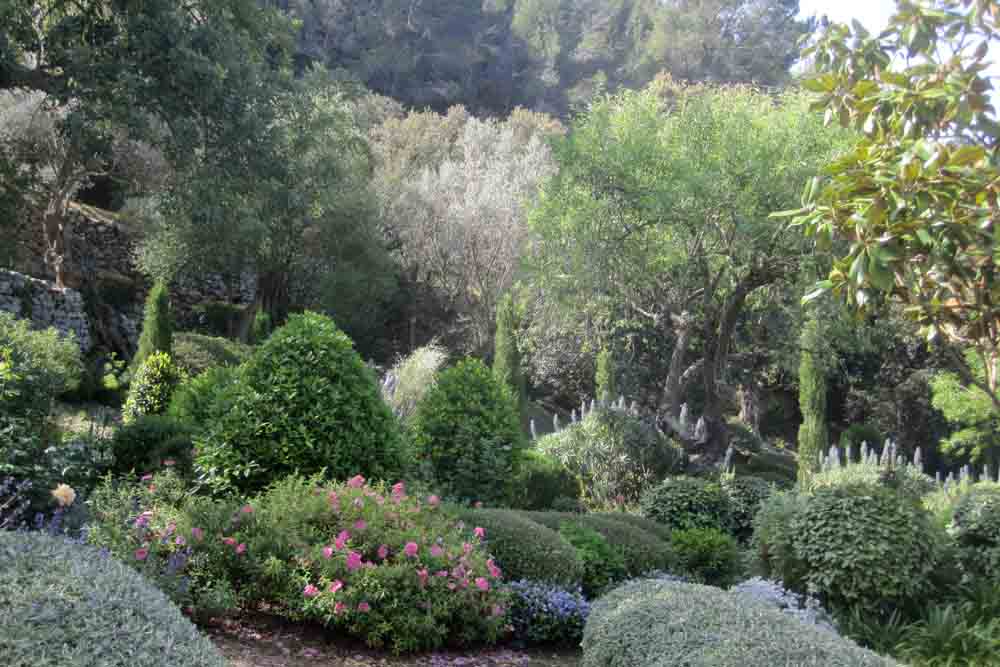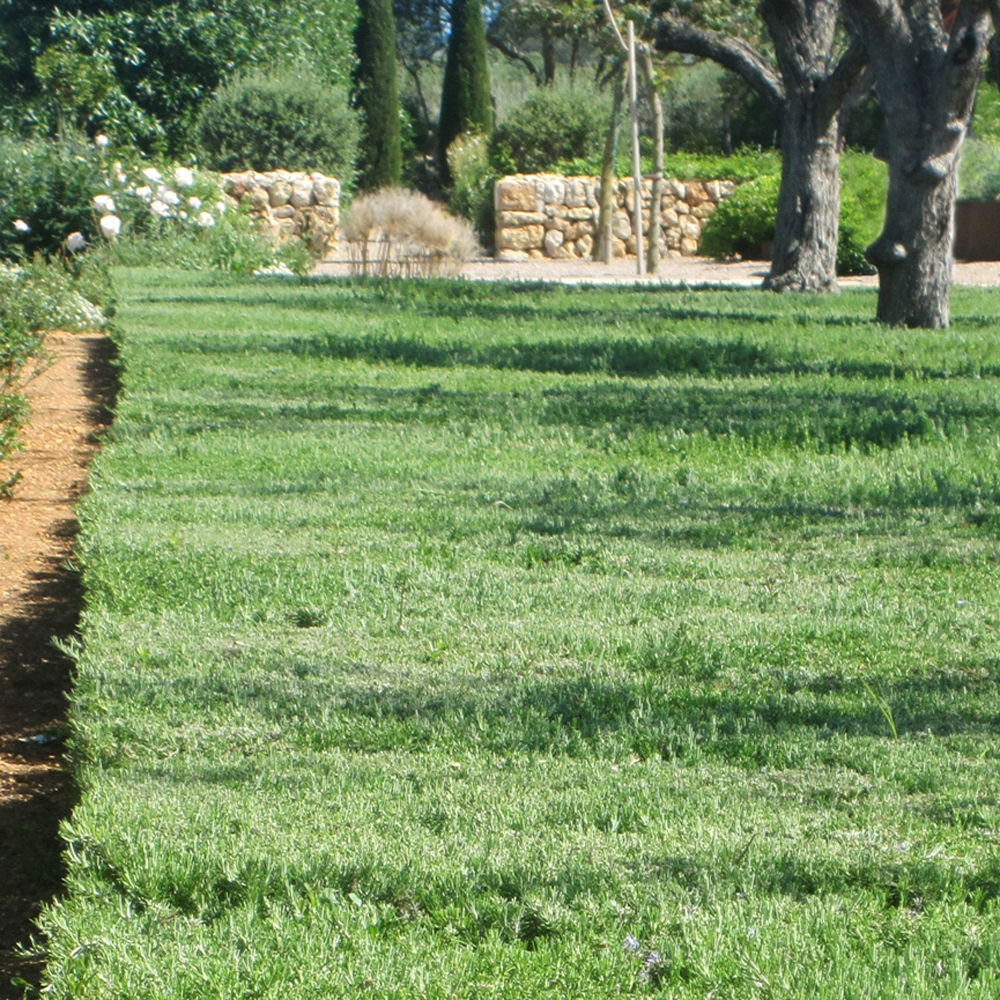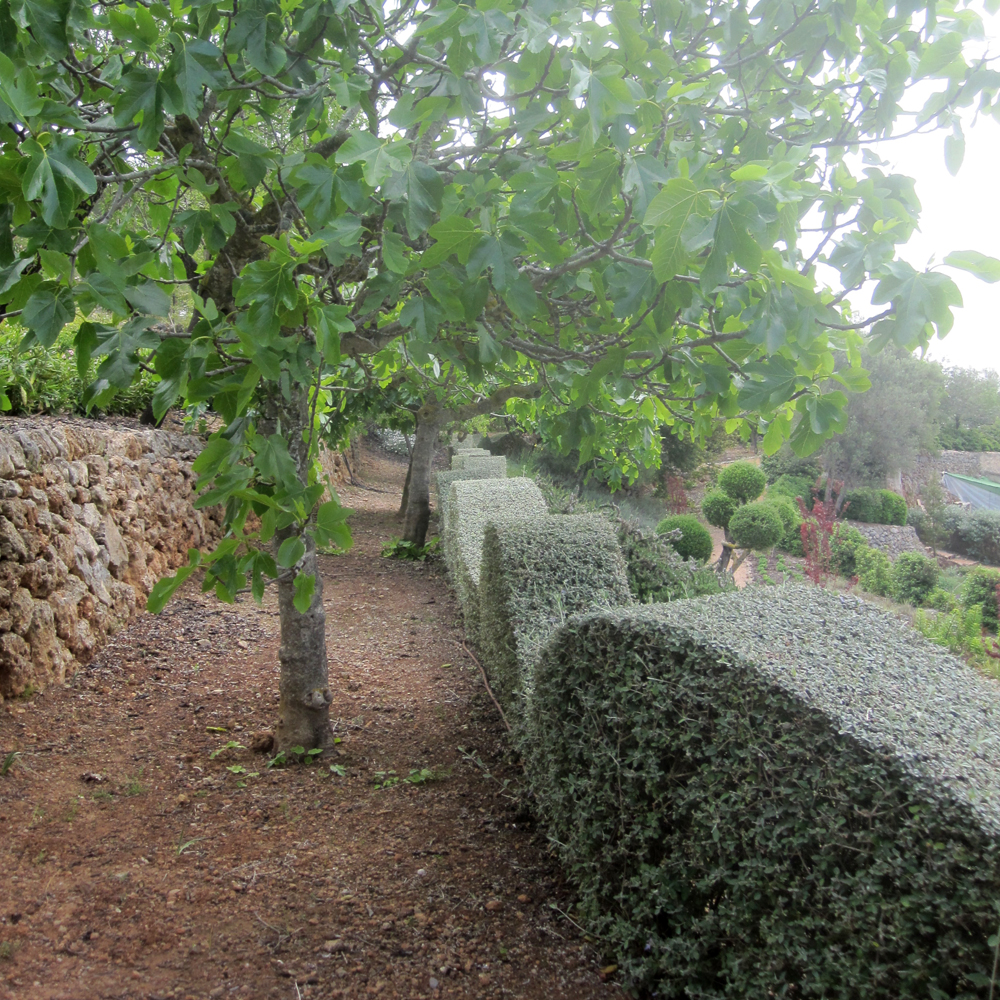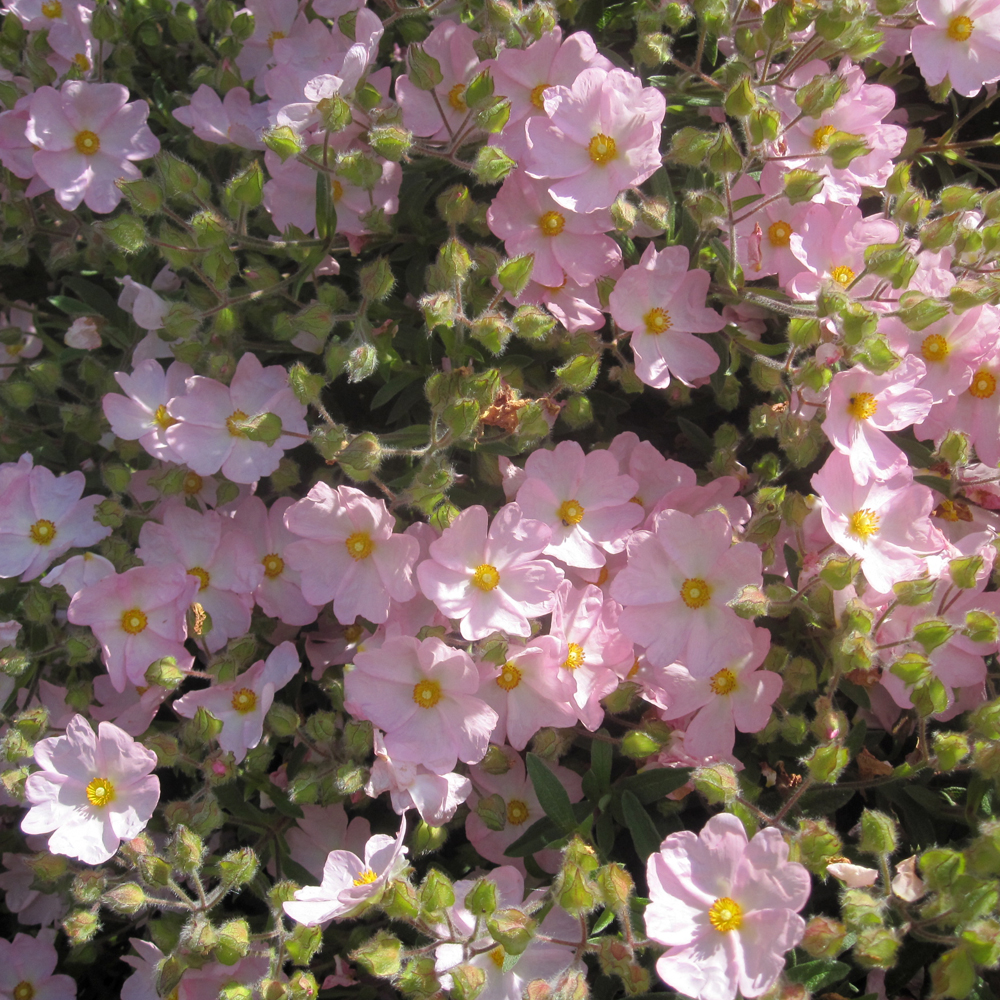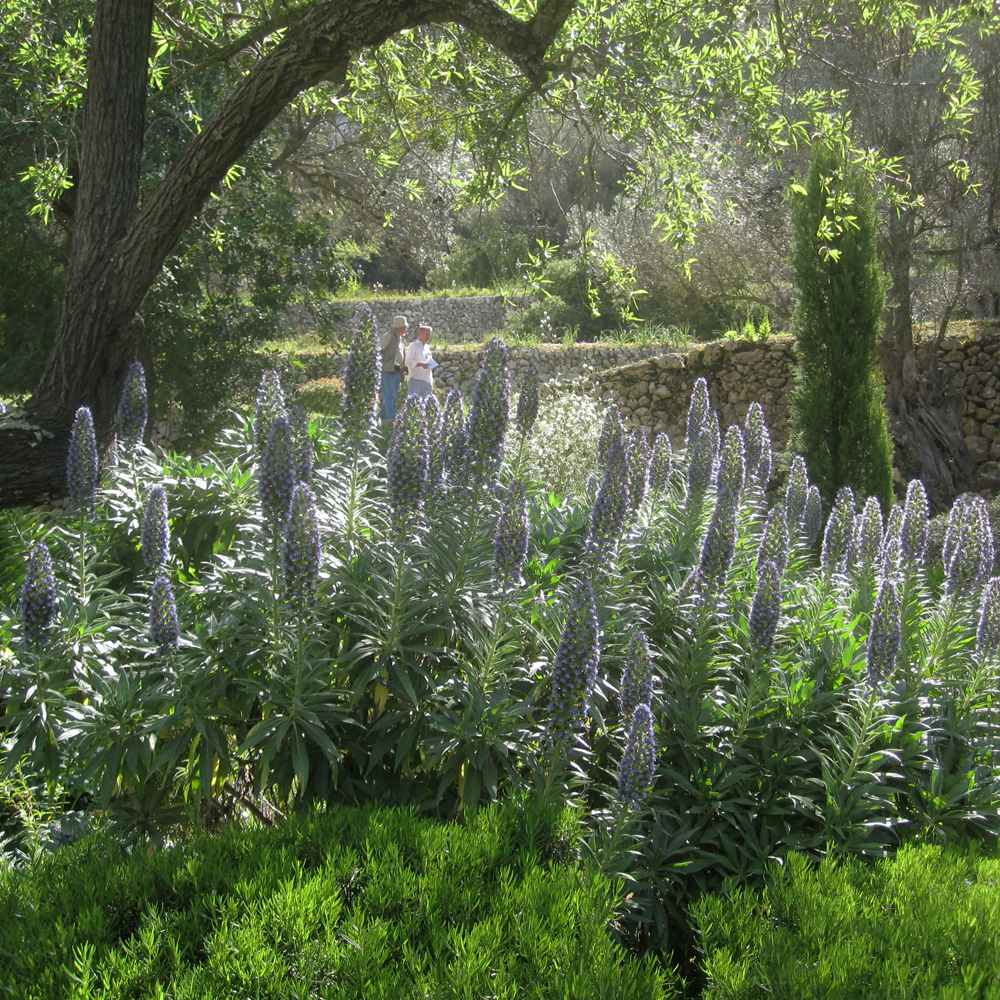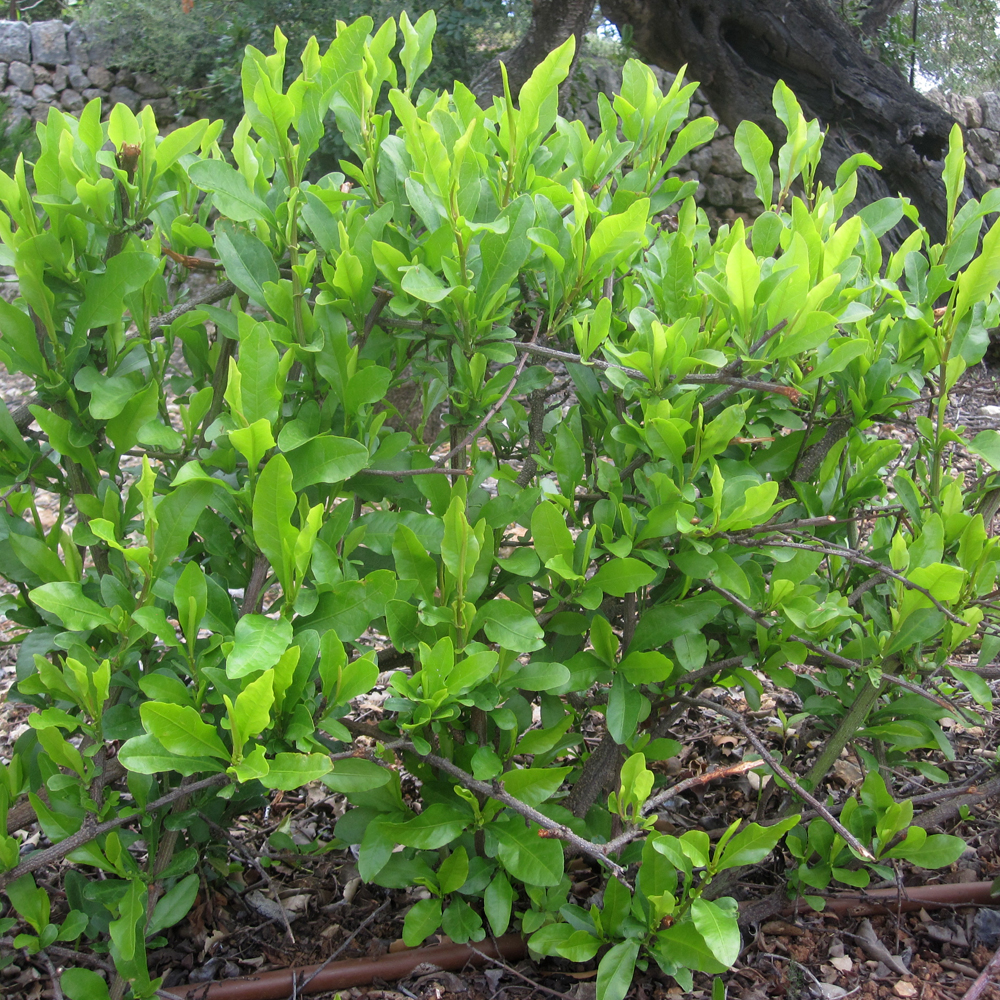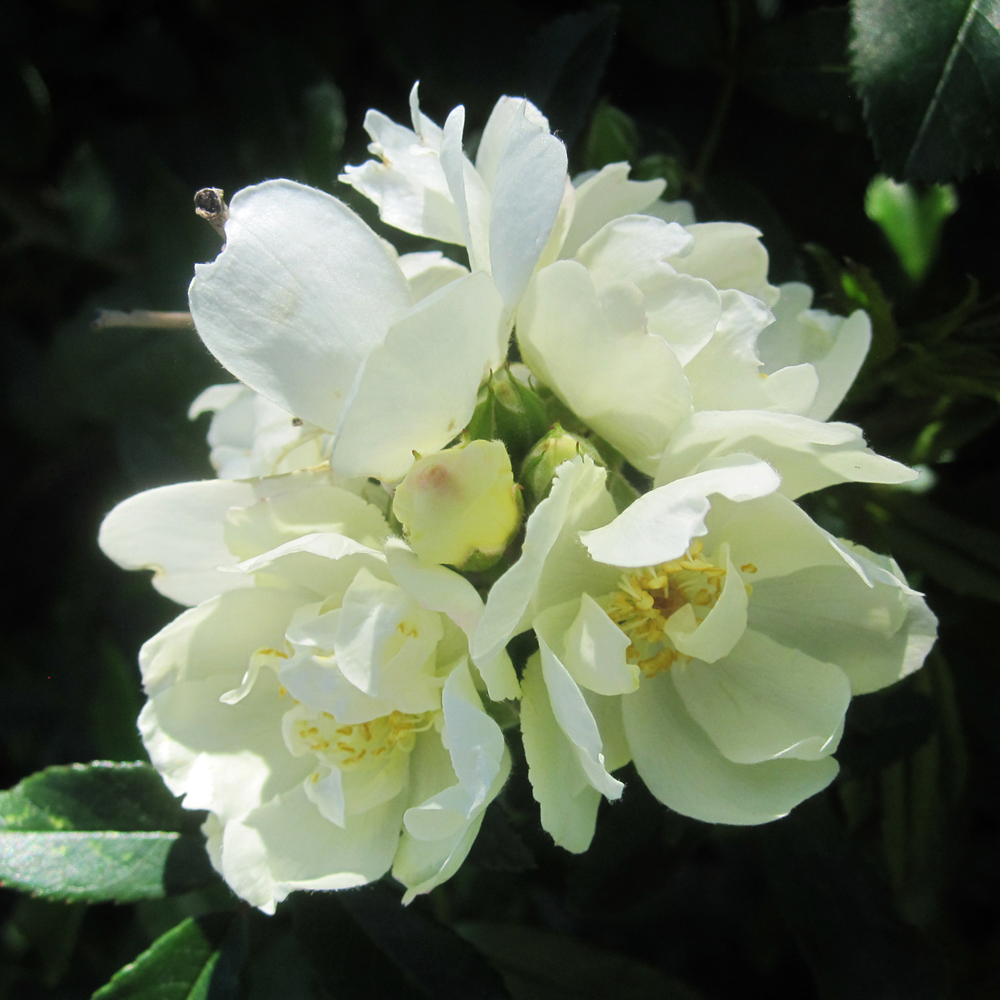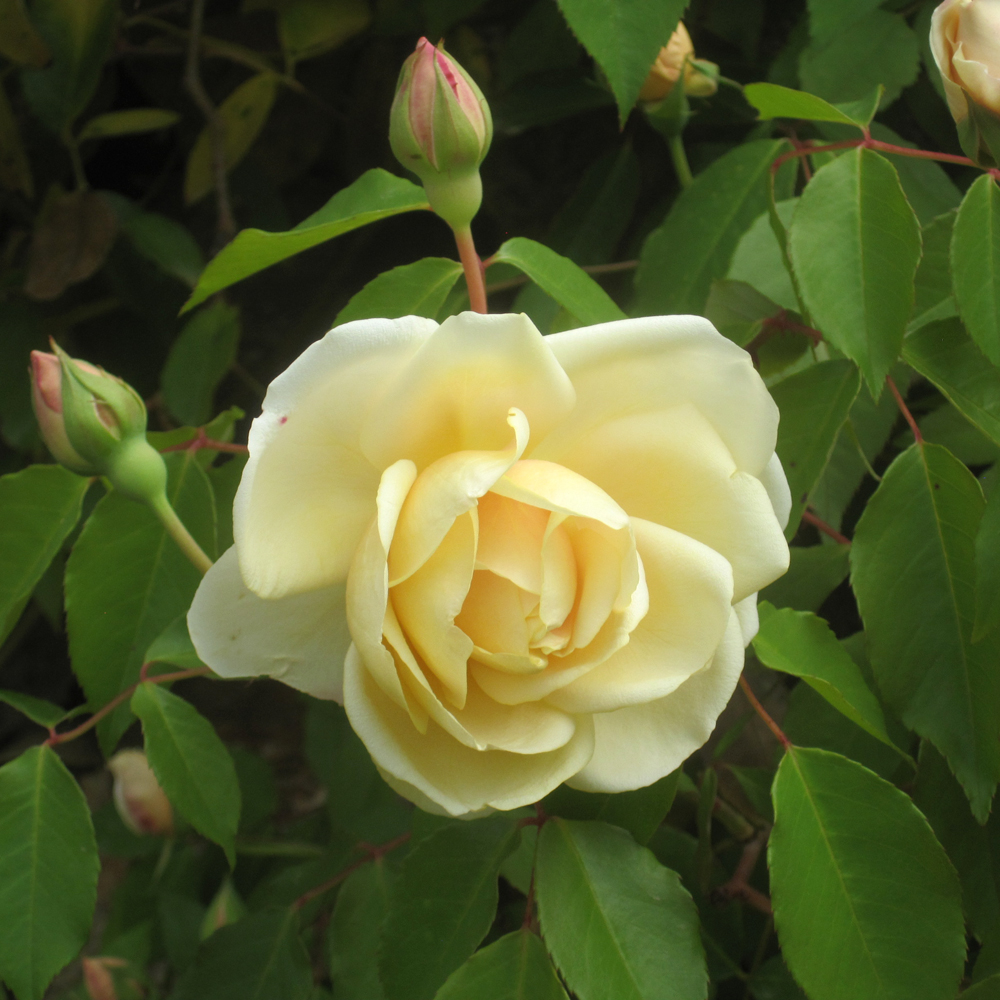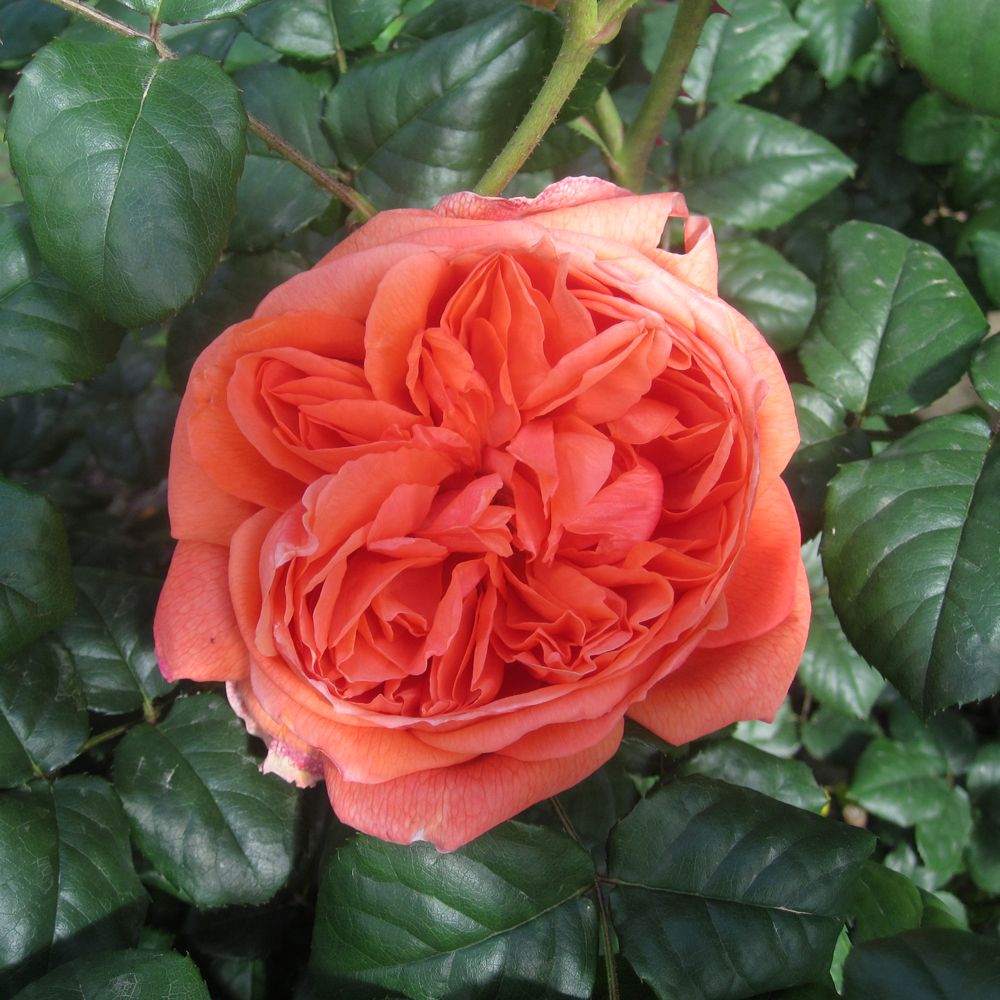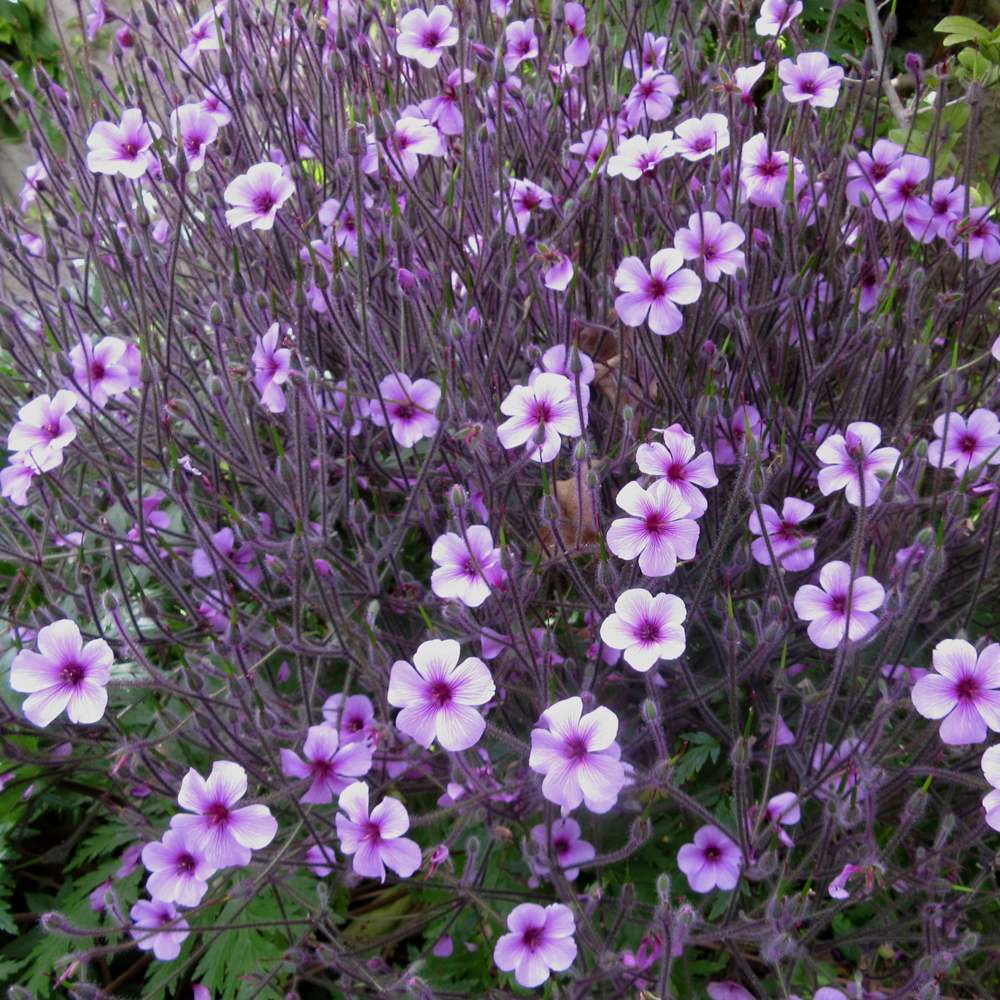Gardens of Mallorca – May 2012
Click on the images to enlarge them / Cliquez sur les images pour les agrandir
As with many good ideas, it was born as the sun was setting and we sipped our pre-dinner drinks whilst reflecting on the day’s activities. We were three, Sally Beale and Marianne Beith from Mallorca and me, and we were enjoying the balmy early November sunshine in Cyprus.
MGS France had hosted a visit earlier that year for a group from Mallorca and Sally and Marianne were full of enthusiasm for a return match. In an hour an outline plan had been sketched out – I would come to the island in late spring when the gardens and the countryside would be at their best, put together a programme and we would make the trip the following year.
As it happened, the volcanic ash cloud caused us to postpone the trip for twelve months, but in May 2012 a group of twenty arrived in Palma for the tour.
Over the next few days we visited six gardens, walked in the mountains and enjoyed a fabulous welcome from our hosts. The previous winter had been tough throughout the western Mediterranean and Mallorca had experienced lower temperatures and more snow than usual. As a result all the gardens we visited had suffered losses and damage but these were much more apparent to the owners than to us. Indeed, as the winter temperatures on the island are significantly higher than those we are used to in France, we were able to see many plants which would be too tender for us to cultivate in open ground.
First we visited three gardens situated in the flatter south-east quadrant of the island: Renate’s garden filled with mature plants in perfect condition, Di’s garden, full of wild flowers, and Hélène and Christian’s garden, beautifully designed, with a restrained colour palette of green, silver and white.
Next we travelled to the south-western part of the island to visit three gardens lying on the southern flanks of the Serra Tramuntana.
Cindy’s garden is almost a botanical garden, with collections of plants, particularly salvias and grasses, displayed along long narrow terraces and a propagation area packed with pots.
Sally’s garden is built on a series of terraces, each with its own character, with clipped hedges, cloud-pruned trees, roses and a water feature.
Camilla’s garden, nestled under a dramatic cliff face, has paths winding through shrubs, trees, roses and native Mediterranean plants.
All the gardeners faced the challenges of long, hot summers with almost no rain, and, from time to time, high winds. Each garden had been fashioned from unpromising beginnings over periods from three to eighteen years and all bore witness to the particular vision of their creators. These varied tremendously – some sought primarily to build a setting to grow their favourite plants, others to create a garden in harmony with the surrounding countryside, a sanctuary of calm for peace and relaxation or one full of the stimulus of vibrant colour. All the owners are hands-on gardeners and had learned by experience which plants work best in this challenging environment and techniques to ensure that that the plants thrive.
As we walked around each of the fabulous gardens I asked the owners for their recommendations and advice:
- Three reliable plants for a new garden
- Their own particular favourite, whether easy to grow or not
- A gardening tip or technique to pass on to new gardeners
Here is the collected wisdom of Renate, Di, Hélène, Camilla, Sally and Cindy. The plants they have picked grow well in Mallorca but some may not be sufficiently hardy for colder gardens.
Good plants for a new garden
For structure:
For colour:
The Mallorca gardeners’ favourite plants:
Tips and techniques
Interestingly the tips and techniques that five chose to pass on are mainly about the importance of planning and research. All counselled against the temptations of impulse buying and were advocates of the old adage “right plant, right place”.
| Hélène: | Make plans during the year for new projects then buy and plant in October. |
| Camilla: | Clip structural plants like eleagnus, box, bay and teucrium, regularly. This provides good form for the garden against which softer foliage and flowers may be appreciated and also ensures fresh young foliage constantly reappears. |
| Sally: | Research the correct planting distance before planting in order not to crowd the plants when they reach maturity and be patient – many Mediterranean plants grow slowly. |
| Cindy: | When planning a new garden or infilling in an existing one, make sure that plants with similar needs for water, soil type and maintenance are planted together. |
| Renate: | Good gardening books are essential. Renate’s favourites are Mediterranean Gardening : A Waterwise Approach by Heidi Gildemeister, The Mediterranean Gardener by Hugo Latymer and the RHS Encyclopedia of Gardening. She suggests researching each potential new plant and checking that its requirements for sun/shade, water and soil type fit the intended planting spot. It’s also important not to judge too quickly, always waiting at least a year for a plant to get established before expecting it to produce good growth. |
Thank you to all our hosts for their warm welcome and for their diligence in answering all our questions. Our trip to Mallorca was all that we could have hoped for, sharing a passion for Mediterranean plants and gardens with some of its very best practitioners.
Text; Christine Daniels
Photographs: Christine Daniels and Guy Cheeseman
![]()
